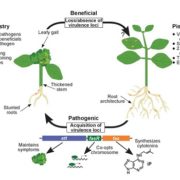
Evolutionary transitions between beneficial and phytopathogenic Rhodococcus
Blog, Plant Science Research Weekly, Research, Research BlogRodococcus bacteria are often identified as causal agents in disease outbreaks. Savory et al. analyzed 60 isolates from diseased plants. By comparing these new isolates and previous isolates, they found that 64 of 66 pathogenic isolates carry a linear virulence plasmid, and that all but four carried…

What We're Reading: December 22nd
Blog, Research, Research Blog, WWR Full PostReview: On the selectivity, specificity and signaling potential of long-distance movement of messenger RNA
Regulation of transcription occurs at the cell-type specific level, but transcribed messenger RNA is mobile and can move between tissues through plant vasculature, serving as a long distance…
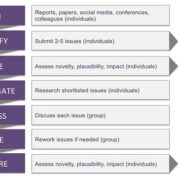
Point of View: A transatlantic perspective on 20 emerging issues in biological engineering studies
Blog, Plant Science Research Weekly, Research, Research Blog“Horizon scanning” describes the process of trying to rationally predict the future. Wintle et al. describe the results from a horizon-scanning exercise to identify emerging issues in biological engineering. The authors used an iterative approach to identify key issues in the near and longer-term…

Plant RuBisCo assembly in E. coli with five chloroplast chaperones ($)
Blog, Plant Science Research Weekly, Research, Research BlogIn plants, Ribulose-1,5-bisphosphate carboxylase/oxygenase (RuBisCo), the enzyme responsible for fixing carbon, is a made up of 8 each of the large and small subunits, making the L8S8 form. Efforts to study this enzyme have been thwarted by the inability to assemble an active L8S8 form in a heterologous…
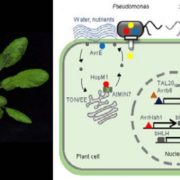
Review: The role of water in plant-microbe interactions ($)
Blog, Plant Science Research Weekly, Research, Research BlogWater, a principal component on earth has also a fundamental role in maintenance of plants, microbes and the disease that is shaped by such interaction. Pathogenic disease outbreaks occur only in favorable environmental conditions, and atmospheric humidity is essential for pathogenesis. This review by…

Chromatin region accessibility: cross-species comparisons and cell type distinctions
Blog, Plant Science Research Weekly, Research, Research BlogCis-regulatory elements direct transcriptional output during cell differentiation and coordinate adaptive responses to environmental stress. DNA becomes open and accessible when nucleosomes are displaced by DNA-binding proteins, indicating a correlation between open chromatin regions and transcriptional…
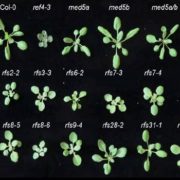
Mediator complex subunits in the regulation of phenylpropanoid biosynthesis ($)
Blog, Plant Science Research Weekly, Research, Research BlogThe Mediator complex is a transcriptional co-regulator that is conserved across kingdoms. Several subunits have been identified through genetic approaches in Arabidopsis. Recessive loss-of-function mutants of MED5 subunits cause phenylpropanoid overaccumulation, but ef4-3, a semi-dominant mutation of…
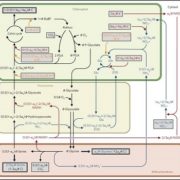
Plants increase CO2 uptake by assimilating nitrogen via the photorespiratory pathway
Blog, Plant Science Research Weekly, Research, Research BlogDuring photosynthesis Rubisco fixes CO2 by carboxylating its substrate RuBP, leading to the de novo production of carbohydrates. Photorespiration has long been considered a wasteful process, initiated by Rubisco-mediated oxygenation of RuBP and resulting in the loss of carbon, nitrogen and energy. …

VASCULATURE COMPLEXITY AND CONNECTIVITY required for bilateral symmetry but not for dorsoventrality in Arabidopsis leaves
Blog, Plant Science Research Weekly, Research, Research BlogThe formation of the lobes at the Arabidopsis leaf margin are due to differences in local auxin accumulation, coordinated by auxin efflux carrier (PIN1) and transcriptional regulator (CUC2), but the molecular mechanisms acting upstream are not yet understood. Among viable leaf shape mutants, Wilson-Sanchez…

